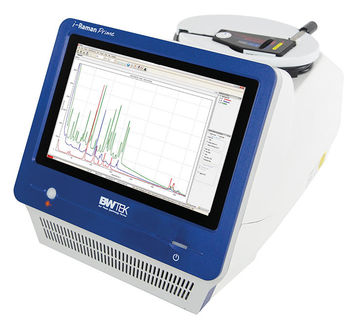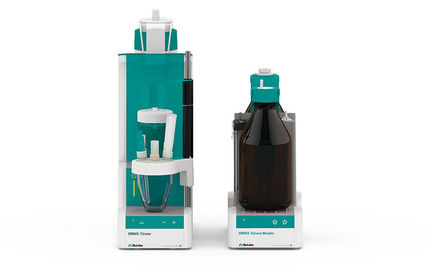Entry inhibitors, also known as fusion inhibitors, are a class of antiretroviral drugs, used in combination therapy for the treatment of HIV infection. This class of drugs interferes with the binding, fusion and entry of an HIV virion to a human cell. By blocking this step in HIV's replication cycle, such agents slow the progression from HIV infection to AIDS.[1]
HIV entry
Proteins
There are several key proteins involved in the HIV entry process.
- CD4, a protein receptor found on the surface of Helper T cells in the human immune system, also called CD4+ T cells
- gp120, a protein on HIV surface that binds to the CD4 receptor
- CCR5, a second receptor found on the surface of CD4+ cells, called a chemokine coreceptor
- CXCR4, another chemokine coreceptor found on CD4+ cells
- gp41, a HIV protein, closely associated with gp120, that penetrates the cell membrane
Binding, fusion, entry sequence
HIV entry into a human cells requires the following steps in sequence:
- The binding of HIV surface protein gp120 to the CD4 receptor
- A conformational change in gp120, which both increases its affinity for a coreceptor and exposes gp41
- The binding of gp120 to a coreceptor either CCR5 or CXCR4
- The penetration the cell membrane by gp41, which approximates the membrane of HIV and the T cell and promotes their fusion
- The entry of the viral core into the cell
Entry inhibitors work by interfering with one aspect of this process.
Approved agents
- Maraviroc binds to CCR5, preventing an interaction with gp120. It is also referred to as a "chemokine receptor antagonist."
- Enfuvirtide binds to gp41 and interferes with its ability to approximate the two membranes. It is also referred to as a "fusion inhibitor."
Investigation/experimental agents
Other agents are under investigation for the ability to interact with some component of HIV entry and the possibility they may serve as entry inhibitors.
- TNX-355, a monoclonal antibody that binds CD4 and inhibits the binding of gp120
- PRO 140, a monoclonal antibody that binds CCR5
- BMS-488043, a small molecule that interferes with the interaction of CD4 and gp120
- Plerixafor was being developed to interfere with interaction between HIV and CXCR4, but showed little useful antiviral activity in recent trials.
- Epigallocatechin gallate, a substance found in green tea, appears to interact with gp120 as do several other theaflavins.
- Vicriviroc, similar to maraviroc, is currently undergoing clinical trails for FDA approval.
- Aplaviroc, an agent similar to maraviroc and vicriroc, clinical trails were halted in 2005 over concerns about the drug's safety.
- b12 is an antibody against HIV found in some long-term nonprogressors. It has been found to bind to gp120 at the exact region, or epitope, where gp120 binds to CD4. b12 seems to serve as a natural entry inhibitor in some individuals. It is hoped that further study of b12 may lead to an effective HIV vaccine.
- Griffithsin, a substance derived from algae, appears to have entry inhibitor properties.[2]
- "Next generation fusion inhibitors" are being developed in an attempt to overcome the shortcomings of enfuvirtide. The most promising candidate to date is TRI-1144, in development by Trimeris.[3][4]
References
- ^ Biswas P, Tambussi G, Lazzarin A (2007). "Access denied? The status of co-receptor inhibition to counter HIV entry". Expert Opin Pharmacother 8 (7): 923–33. doi:10.1517/14656566.8.7.923. PMID 17472538.
- ^ Emau P, Tian B, O'keefe BR, et al (2007). "Griffithsin, a potent HIV entry inhibitor, is an excellent candidate for anti-HIV microbicide". J. Med. Primatol. 36 (4-5): 244–53. doi:10.1111/j.1600-0684.2007.00242.x. PMID 17669213.
- ^ Mascolini, Mark. Preclinical Work Suggests Advantages of New Fusion Inhibitor Versus Enfuvirtide
- ^ Next-Generation Fusion Inhibitor Trimeris.com.
|







